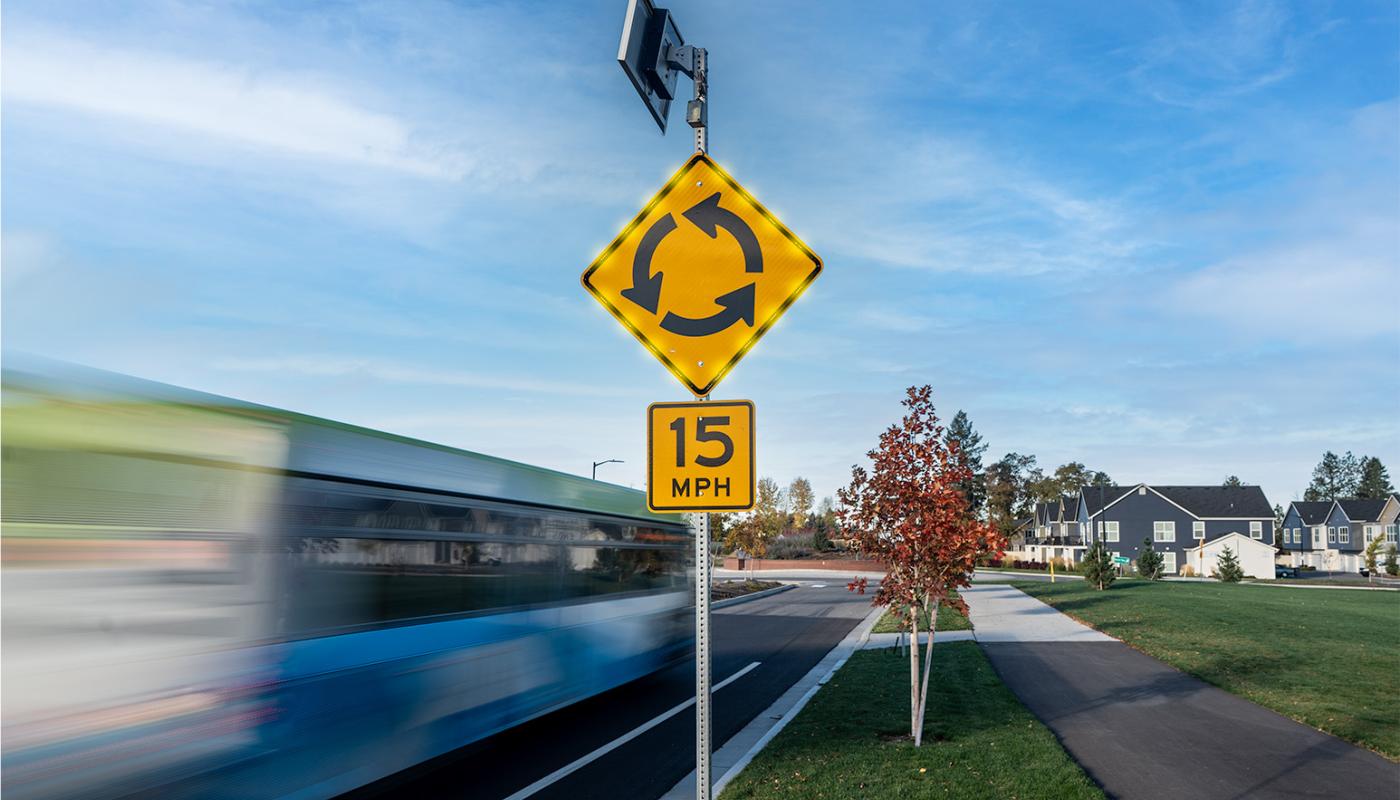Unfortunately, because of budget cuts, and the demands of other areas of law enforcement that are considered more important, police departments and communities rarely have enough resources to devote to traffic calming measures.
How Speeding Affects Neighborhood Safety
Speeding is seen as a victimless crime unless someone gets hurt in an accident, but that is not the case. Neighborhoods that experience chronic high average speed report concerns over child safety, pedestrians and bicyclists report safety concerns. Statistically speeding increases risk of accidents and injuries. It also increases noise complaints. Speeding is among a group of related traffic issues that pose increased safety concerns including aggressive driving, failure to obey posted signs and traffic signals and drunk driving. Attitudes about speeding vary. While some people have very real safety concerns, others see speeding as a minor issue, or a non-issue.
What’s the Harm in Speeding?
Speeding increases the risk of accident and injury in several ways. The faster the driver is going, the greater distance the vehicle will travel before the driver can react. The faster the initial speed, the longer it takes the vehicle to stop, and the farther it will travel while stopping. Higher speed reduces the amount of time a driver has to react before an emergency, and it raises the risk that the driver will lose control of the vehicle. Each 1 mph reduction in the average speed of traffic in surveys results in 5% fewer reported accidents in the same area. (ref. “Speeding in Residential Areas” Community Oriented Policing Services, US Department of Justice) When accidents do occur, speed affects the severity. Accidents that happen at higher speeds result in more damage, and increased risk of pedestrian fatality. Speed was found to be a contributing factor in one eighth of all crashes and one third of all fatal crashes.
Enforcement Responses
The Quantity and severity of accidents, and the results of traffic surveys, determine a community response to speeding. How communities answer neighborhood safety concerns begins with finding with the right combination of traffic calming measures, education and enforcement to meet community goals. The term “traffic calming” refers to roadway engineering, signage and driver feedback methods that either make it difficult to speed, or convince a driver that they should slow down. Municipal planners and community groups can build round-abouts or traffic circles, curb extensions, and set the timing on traffic signals to stop speeders. Another traffic calming measure aids in community education. Radar speed displays give drivers feedback about their speed and encourages drivers to slow down. These radar speed signs are valuable tools for law enforcement and community planners to effectively lower average speeds in localized areas. A law enforcement response in combination with others measures can be highly effective in lowering average speeds dramatically. An active response from uniformed officers enforcing speed limits by issuing tickets to speeders will lower average speed immediately, however, when enforcement moves on to another location, averages creep back up. If a more permanent enforcement response is required for areas stubbornly resistant to traffic calming efforts, a radar speed sign might be an option. Speeding is a serious problem, creating dangerous conditions and lowering the quality of life for residential communities. Fortunately, there are community responses that are very effective at reducing average speeds and protecting our neighborhoods.
